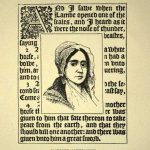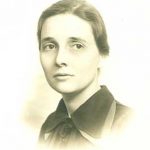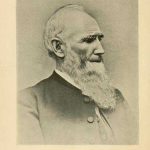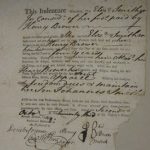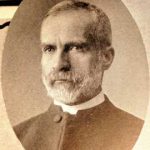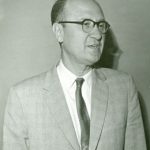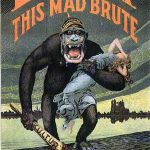Johannes Naas was born in the province of Westphalia, Germany around 1670. His defining feature was his height—he had a broad frame and stood a head taller than an average man1. Naas joined the Brethren congregation at Marienborn, where he served as a minister until persecution drove the Brethren to seek refuge in Krefeld2. In order to further spread the Brethren faith, Naas travelled the surrounding provinces with Jacob Preisz (Price)3. Abraham Cassel highlighted the incident that has become legend in his biography of Johann Naas. The story was later reiterated in the children’s book, The Tall Man.

